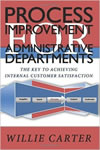All Articles
Accident Prevention & Safety
HVAC - Heating, Ventilation, Air Conditioning
Addiction Issues & Substance Abuse
Injury
Anger Management & Related Issues
Insurance
Appraisal & Valuation
Insurance Coverage Analysis
Automotive - Vehicular
Intellectual Property
Bacteria - Fungus - Mold Investigation
Jails - Prisons - Correctional Facilities
Banking
Law Enforcement
Blockchain Information
Machinery
Business Management
Medical Records Review
Computer Forensics
Neuropsychology
Counseling
Oil & Gas
Crime Scene Investigation
Patents
Documentation Examination & Analysis
Plastic / Reconstructive / Cosmetic Surgery
Education & Schools
Professional Malpractice
Electrical - Electrocution
Psychology
Employment
Public Speaking
Energy - Utilities
Security
Engineering
Sexual Abuse - Molestation - Harassment
Enterprise Resource Planning (ERP)
Slip, Trip & Fall
Ethics / Ethical Duties
Supply Chain Management
Failure Analysis
Toxicology
Finance
Transportation
Food & Beverage
Underwriting
Forgery & Fraud
Warnings & Labels
Hotels & Hospitality
Yoga
More...

CONSTRUCTION-PAGE ARTICLES MAIN PAGE
. Contact Us if you are interested in having your work published on our website and linked to your Profile(s).
All Articles
Accident Investigation & Reconstruction
Family Issues
Alcohol, Tobacco & Other Drugs
Finance
Alternative Dispute Resolution (ADR)
Foreign Affairs - Geopolitics
Aquatics Safety
Hazardous Materials
Architecture
Hotels & Hospitality
Arms - Guns - Weapons
Insurance Coverage Analysis
Artificial Intelligence (AI) / Machine Learning (ML)
Intellectual Property
Attorney Fees
Internet Marketing
Automotive - Vehicular
Jails - Prisons - Correctional Facilities
Bacteria - Fungus - Mold Investigation
Machinery
Banking
Meditation
Biokinetics
Mining
Blockchain Information
Police Practices & Procedures
Boating
Premises Liability
Chemical Industry
Product Liability
Child Welfare
Professional Malpractice
Corrosion
Professional Skills
Crime Scene Investigation
Risk Management
Criminology
Search Engine Optimization (SEO)
Crisis Management
Sexual Abuse - Molestation - Harassment
Dental - Dentistry
Spirituality
Engineering
Supply Chain Management
Enterprise Resource Planning (ERP)
Taxation
Exercise & Fitness
Warnings & Labels
Eyewitness Testimony
Workplace Violence
More...
Featured Articles
There are no active articles here at this time. Please use the search bar, try another category, or contact us if you would like to contribute an article.
This Article is unavailable. Contact Us
Search articles by title, description, author etc.
Sort Featured Articles
Featured resources
Process Improvement for...
by Willie L. Carter
The Health Care Providers Guide To...
by Constance G. Uribe
The New Options Market
by Max G. Ansbacher
Follow us










